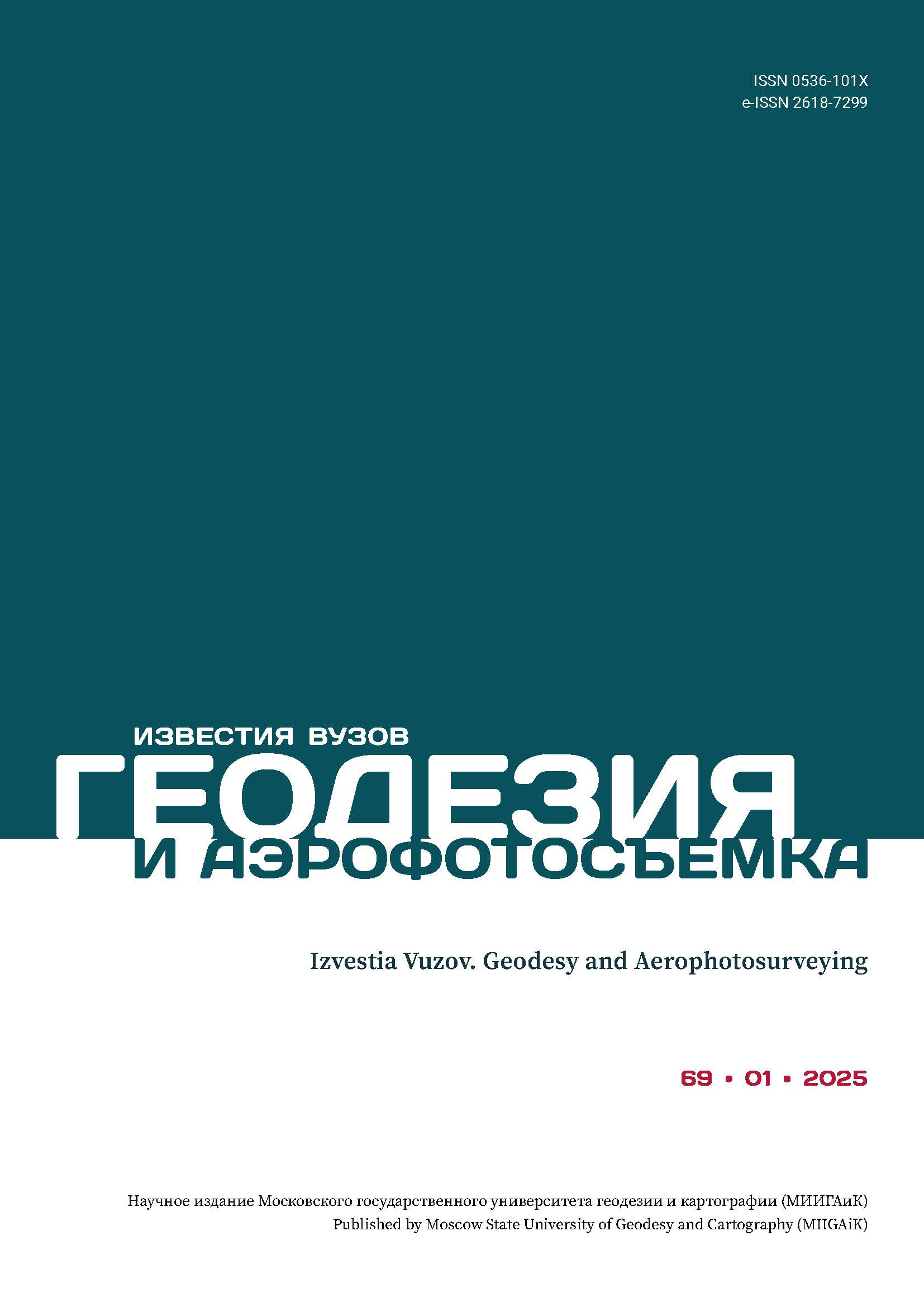from 01.01.2014 until now
UDC 528.855
CSCSTI 36.16
Satellite altimetry is an effective way to study the Earth’s gravity field, the behavior of the World Ocean and to observe climate change. This is facilitated by the global distribution of measurements and their high accuracy. To obtain high-precision altimetry measurements, it is necessary to take into account the errors of a significant number of parameters affected by the state of the atmosphere, the sea surface and internal instrument delays of the altimeter. The residual error after taking into account all error sources is determined using external calibration. Most often, buoys with receivers of global navigation satellite systems are used for external calibration. This article discusses ways to improve the existing altimeter calibration methodology. To improve the calibration, it is proposed to use one of the tools of geoinformatics – geoinformation monitoring. Using geoinformation monitoring to build an information model of the sea surface, it is possible to take into account the influence of the most complex factor – sea surface anomalies or dynamic topography. The article proposes options for changing the number of measuring systems and rules for their application. To implement geoinformation monitoring, a method for constructing a geoinformation model of the sea surface using second-degree polynomials is studied. The results of experimental studies on the calibration of a satellite altimeter using the geoinformation monitoring method are presented.
gravitational field, space geodetic system, satellite altimeter, external calibration, sea surface height, geoinformation monitoring
1. Mertikas S, Donlon C, et al. Fifteen Years of Cal/Val Service to Reference Altimetry Missions: Calibration of Satellite Altimetry at the Permanent Facilities in Gavdos and Crete, Greece. Remote Sensing. 2018;10(10): 1557. DOIhttps://doi.org/10.3390/rs10101557. https://www.peeref.com/works/16853392
2. Bonnefond P, Exertier P, Laurain O, et al. Corsica: A 20-yr multi-mission absolute altimeter calibration site. Advances in Space Research. 2021;68(1): 1171–1186. DOIhttps://doi.org/10.1016/j.asr.2019.09.049. https://www.sciencedirect.com/science/article/abs/pii/S0273117719307276?via%3Dihub
3. Liu Y, Tang J, Zhu J, et al. An improved method of absolute calibration to satellite altimeter: A case study in the Yellow Sea, China. Acta Oceanologica Sinica. 2014;33(5): 103–112. DOIhttps://doi.org/10.1007/s13131-014-0476-8. https://link.springer.com/article/10.1007/s13131-014-0476-8
4. Haines B, Desai SD, Kubitschek D, et al. A brief history of the harvest experiment: 1989–2019. Advances in Space Research. 2021;68(2): 1161–1170. DOIhttps://doi.org/10.1016/j.asr.2020.08.013. https://www.sciencedirect.com/science/article/pii/S0273117720305718?via%3Dihub
5. Zhou B, Watson C, Legresy B, et al. GNSS/INS-equipped buoys for altimetry validation: Lessons learnt and new directions from the Bass Strait Validation Facility. Remote Sensing. 2020;12(18): 3001. DOIhttps://doi.org/10.3390/rs12183001. https://www.mdpi.com/2072-4292/12/18/3001
6. Iakovlev NN. Metodika kalibrovki vysokotochnogo radiovysotomera (al’timetra) s ispol’zovaniem global’nyh navigacionnyh sputnikovyh sistem [Methodology for calibrating a satellite altimeter using global navigation satellite systems]. Izvestia vuzov. Geodesy and Aerophotosurveying. 2024;68(3): 8–25. (In Russian). DOIhttps://doi.org/10.30533/GiA-2024-023
7. Tsvetkov VYa. Informacionnye modeli i geoinformacionnye modeli [Information models and geographic information models]. Educational Resources and Technologies. 2016;4(16): 114–120. (In Russian). DOI:https://doi.org/10.21777/2312-5500-2016-4-114-120. https://vestnik-muiv.ru/upload/iblock/af2/af26e430f9c88312f0214ac22567eb0d.pdf
8. Tsvetkov VYa. Geoinformacionnyj monitoring [Geoinformation monitoring]. Izvestia vuzov. Geodesy and Aerophotosurveying. 2005;5: 151–155. (In Russian).
9. Ratner EA, Zajcev AI, Kvasnoj MA. Splajn-interpoljacija dlja postroenija trehmernyh batimetricheskih modelej pri kartografirovanii vnutrennih vodnyh putej [Analysis of the accuracy of interpolation methods in the process of bathymetric mapping of inland waterways]. Vestnik Gosudarstvennogo universiteta morskogo i rechnogo flota imeni admirala S.O. Makarova. 2020;12(5): 894–905. (In Russian). DOIhttps://doi.org/10.21821/2309-5180-2020-12-5-894-905. https://elibrary.ru/download/elibrary_44402042_90040566.pdf
10. Medvedev IP. Dispersionnyj analiz kolebanij urovnja Chernogo morja v shirokom diapazone chastot [Analysis of variance of the Black Sea level oscillations in a wide range of frequencies]. Physical Oceanography. 2018;34(6): 489–500. DOIhttps://doi.org/10.22449/0233-7584-2018-6-489–500. https://elibrary.ru/download/elibrary_36546999_76732003.pdf






